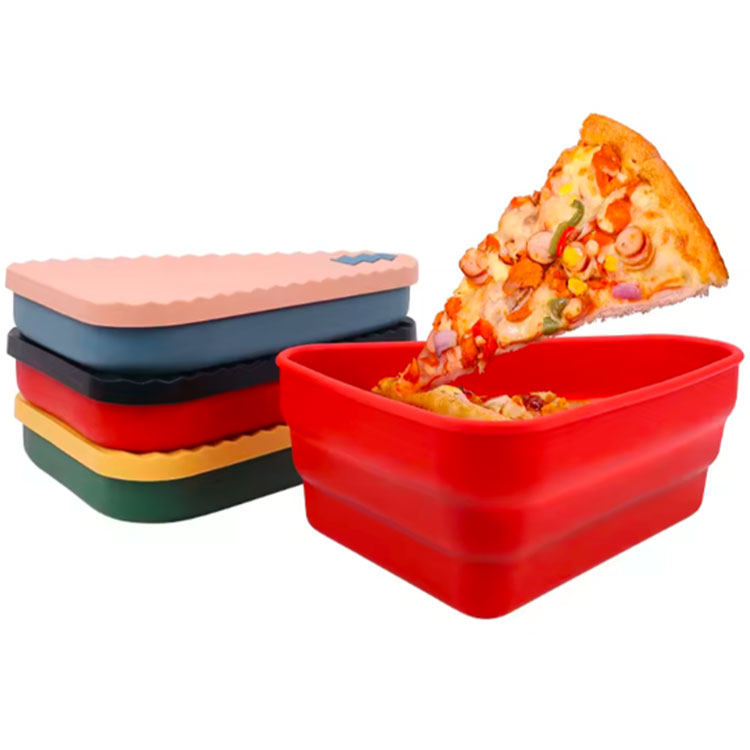The Evolution of Food Packaging Boxes: Balancing Functionality, Sustainability, and Design
2024-12-18
Food packaging boxes have come a long way in terms of both functionality and design. What was once a simple means of protecting and transporting food has now become an integral part of the consumer experience, playing a key role in food safety, marketing, and sustainability. As consumer preferences shift toward more eco-friendly solutions, the food packaging industry has had to adapt, resulting in innovative packaging options that blend practicality with sustainability and style.

The Importance of Food Packaging Boxes
Food packaging boxes are essential for a wide range of reasons, beyond just holding food. Here are some of the key benefits of food packaging:
1. Food Safety and Freshness
The primary function of food packaging boxes is to protect food from contamination and spoilage. Packaging helps maintain the freshness and quality of food by acting as a barrier against moisture, air, light, and microorganisms. It keeps food safe from external elements during transportation, storage, and handling, preserving the integrity of the product.
2. Convenience for Consumers
Food packaging boxes make it easy for consumers to carry, store, and consume their food. Takeout boxes, for instance, offer convenience for on-the-go meals, while resealable boxes ensure that food stays fresh after opening. In addition, packaging that’s easy to handle and store can make the consumer’s experience much more enjoyable.
3. Branding and Marketing
In a competitive food market, packaging plays a vital role in attracting consumers. Custom food packaging boxes with distinctive logos, colors, and designs can create a strong brand identity. A well-designed box not only draws attention but also communicates the quality and value of the food inside. Packaging is often the first point of interaction between the product and the customer, making it an important marketing tool.
The Shift Toward Sustainable Food Packaging
As environmental concerns grow, the demand for sustainable food packaging has skyrocketed. Traditional food packaging, particularly plastic, has long been a point of contention due to its environmental impact. As a result, many companies are turning to more sustainable materials, such as cardboard, paper, and plant-based plastics, to reduce their carbon footprint and meet consumer demand for eco-friendly solutions.
1. Eco-friendly Materials
One of the most significant trends in food packaging is the shift toward biodegradable and recyclable materials. Cardboard and corrugated paper are among the most popular choices for food packaging because they are not only renewable but also biodegradable. Additionally, many companies are investing in packaging made from plant-based materials such as sugarcane, corn starch, or mushroom-based packaging, which can decompose naturally and leave no harmful waste.
2. Minimalist and Functional Designs
In response to the growing demand for sustainability, many food packaging brands are adopting minimalist designs that reduce the amount of material used. This includes smaller, more compact boxes that require less paper or plastic, as well as designs that utilize eco-friendly inks and adhesives. These changes reduce waste, lower production costs, and ultimately contribute to a greener planet.
3. The Rise of Reusable Packaging
An emerging trend in food packaging is the focus on reusable boxes and containers. Some restaurants, cafes, and food delivery services have begun offering reusable packaging options, allowing customers to return the containers for cleaning and reuse. This approach significantly reduces waste and encourages a circular economy model, where packaging is reused instead of discarded.
The Future of Food Packaging Boxes
The future of food packaging boxes lies in further innovation and sustainability. Technology will continue to play a significant role in improving packaging designs, from tamper-evident features for food safety to smart packaging with QR codes that provide consumers with detailed product information. Moreover, as the food industry embraces sustainability, we can expect to see even more plant-based and recyclable options dominating the market.
Conclusion
Food packaging boxes have evolved far beyond their basic functional purpose. Today, they serve as a vital component of food safety, convenience, branding, and sustainability. With growing consumer demand for eco-friendly options, the food packaging industry is embracing innovative solutions that reduce waste and minimize environmental impact. The future of food packaging looks promising, with new materials and technologies leading the way toward a more sustainable and consumer-conscious industry.


